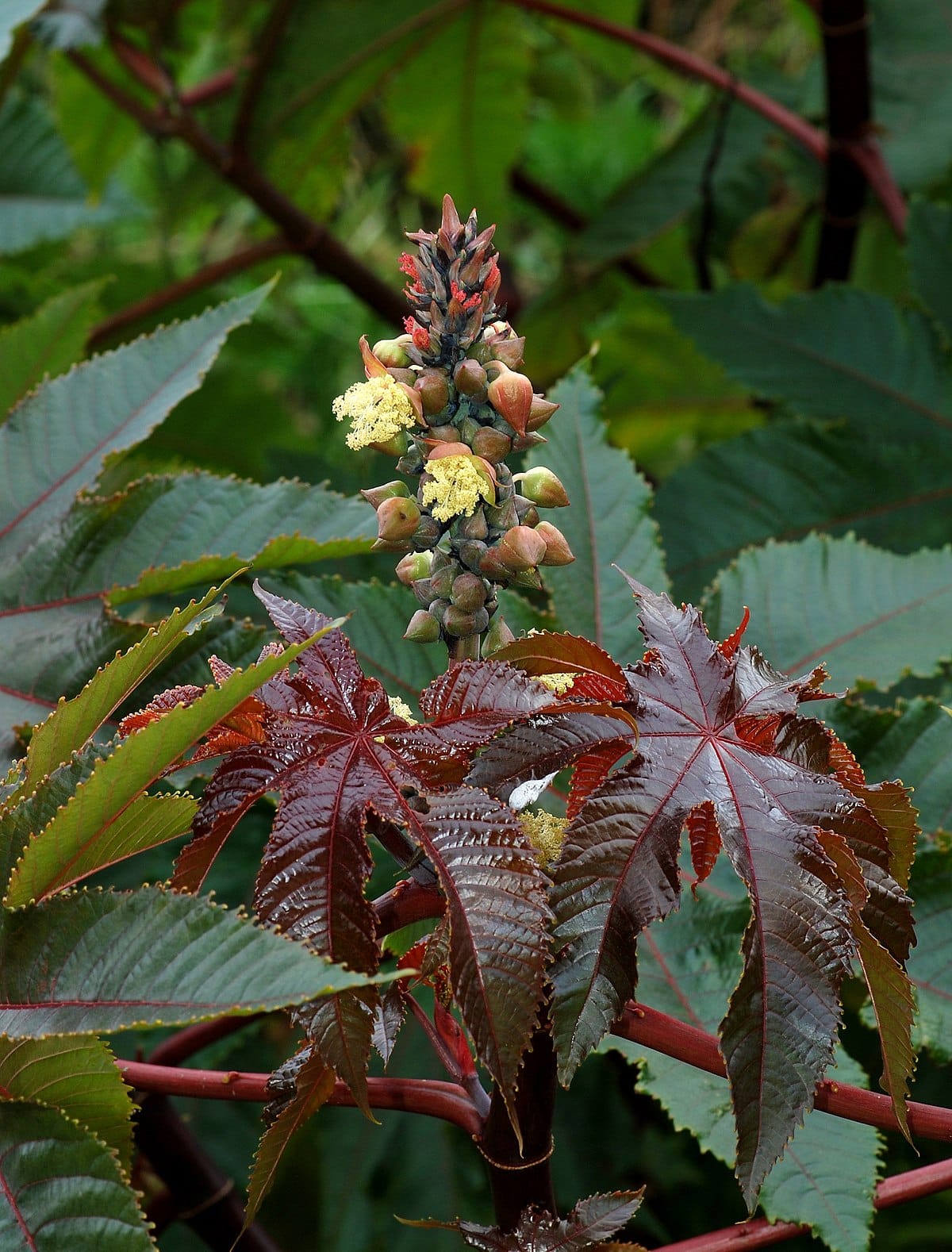ERAND

listen about me
Ricinus communis L.
Classification:
Kingdom: Plantae
Division: Magnoliophyta
Class: Magnoliopsida
Order: Malpighiales
Family: Euphorbiaceae
Genus: Ricinus
Species: communis
Scientific Name: Ricinus communis L.
Common Name-
English: Castor Bean, Castor Oil Plant
Description:
Habit & Habitat: It can vary greatly in its growth habit and appearance. It is a fast- growing, suckering shrub that can reach the size of a small tree, around 39 feet, but it is not cold hardy.
Leaves: The glossy leaves are 6–18 in. long, long-stalked, alternate and palmate with five to twelve deep lobes with coarsely toothed segments. In some varieties they start off dark reddish purple or bronze when young, gradually changing to a dark green, sometimes with
a reddish tinge, as they mature. Plants with the dark leaves can be found growing next to those with green leaves, so there is most likely only a single gene controlling the
production of the pigment in some varieties.
Stem: The stems and the spherical, spiny seed capsules also vary in pigmentation. The fruit
capsules of some varieties are more showy than the flowers.
Flowers: The flowers lack petals and are unisexual (male and female) where both types are borne on the same plant (monoecious) in terminal panicle-like inflorescences of green or, in some varieties, shades of red. The male flowers are numerous, yellowish-green with prominent creamy stamens; the female flowers, borne at the tips of the spikes, lie within the immature spiny capsules, are relatively few in number and have prominent red stigmas.
Fruits: The fruit is a spiny, greenish (to reddish-purple) capsule containing large, oval, shiny, bean-like, highly poisonous seeds with variable brownish mottling. Castor seeds
have a warty appendage called the caruncle.
Uses:
1) Castor oil has many uses in medicine and other applications.
2) Castor oil is an effective motor lubricant.
3) Ricinus communis leaves are used in botanical printing (also known as eco-printing)
in Asia.
4) Castor seeds have been found in Egyptian tombs dating back to 4000 BC, the slow-burning oil was mostly used to fuel lamps.
